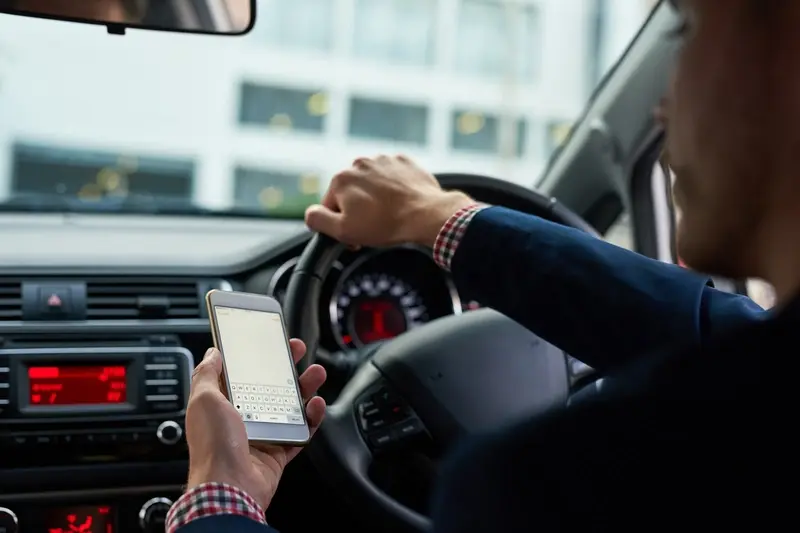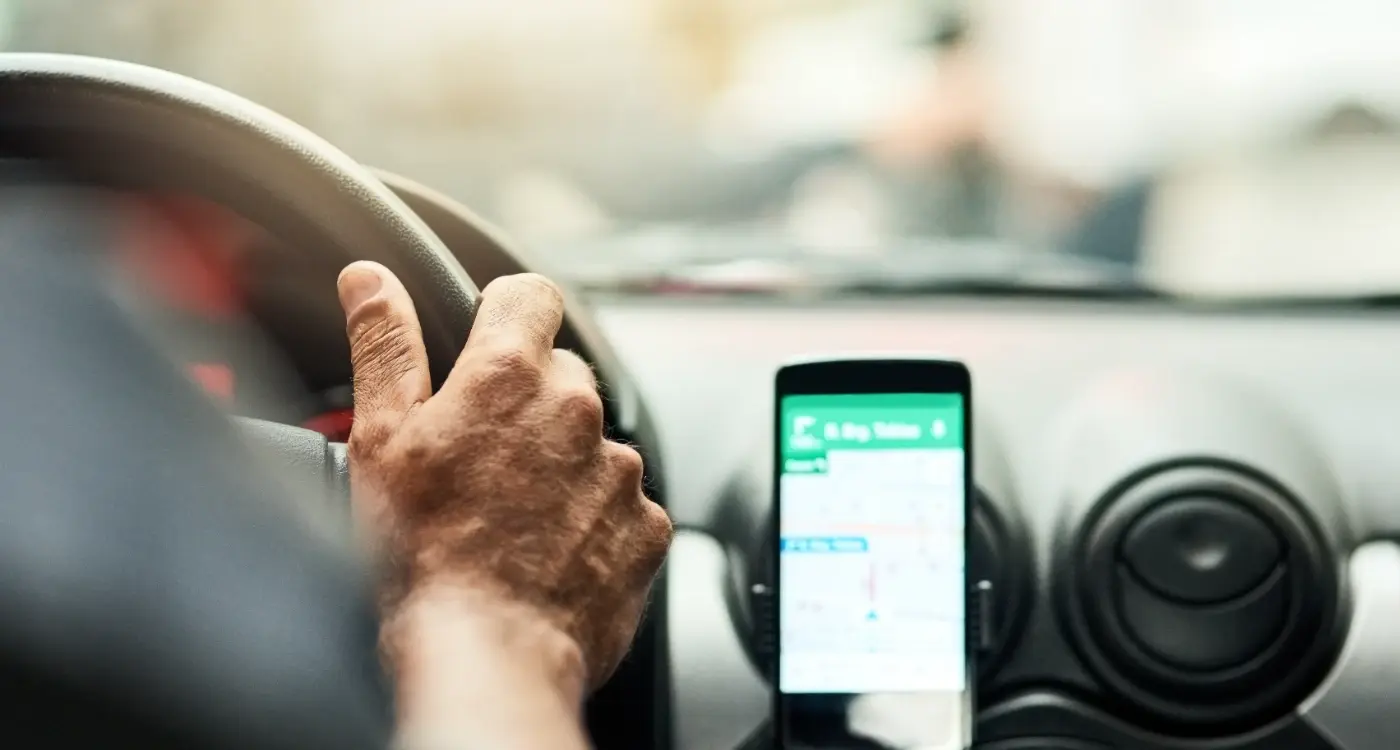How Do You Integrate Apps With Car Systems Safely?
Every minute, millions of people tap their phone screens whilst driving—a sobering reality that makes integrating automotive apps with car systems one of the most critical safety challenges facing developers today. Modern vehicles are becoming computers on wheels, packed with touchscreens, voice assistants, and connectivity features that promise to make driving safer and more convenient.
The challenge isn't just about making apps work in cars; it's about doing so without creating dangerous distractions. When someone's travelling at 70mph down a motorway, every second their eyes leave the road matters. This is where proper integration becomes a matter of life and death, not just user experience.
The most successful automotive apps are the ones drivers never have to look at whilst driving
Throughout this guide, we'll explore how to create automotive apps that prioritise vehicle safety whilst delivering the functionality drivers need. From understanding different car platforms to designing interfaces that work with voice control, we'll cover the technical requirements and safety standards that separate professional automotive app development from dangerous amateur attempts. The goal isn't just to build an app that works in cars—it's to build one that makes driving safer for everyone on the road.
Understanding Car Systems and App Integration
Car systems have changed dramatically over the past decade—what used to be simple radio controls has become sophisticated computer networks that can talk to your phone, manage your music, and even help you navigate. When we're building automotive apps that need to work with these systems, we're not just creating another mobile app; we're creating something that becomes part of a moving vehicle.
Most modern cars use what's called an infotainment system. Think of it as the car's main computer that handles entertainment, navigation, and communication. These systems run on platforms like Android Auto, Apple CarPlay, or the car manufacturer's own software. Each one has different rules about what apps can do and how they can do it.
How Apps Connect to Cars
There are two main ways your app can connect to a car system. The first is through your smartphone—you plug it in or connect wirelessly, and the car's screen shows a simplified version of your app. The second is building an app that runs directly on the car's system itself, though this is much more complex and requires working closely with car manufacturers.
The key thing to understand is that car systems are designed with safety first. They limit what apps can display, how users can interact with them, and when certain features can be used. This means your regular mobile app won't work in a car—you need to design specifically for this environment.
Safety Standards and Legal Requirements
When I first started working with automotive apps, I'll be honest—the legal side felt overwhelming. But here's the thing: understanding safety standards isn't just about ticking boxes; it's about keeping people alive. The National Highway Traffic Safety Administration sets clear guidelines about driver distraction, and ignoring them isn't just risky—it's potentially catastrophic.
The core principle behind all automotive app regulations is simple: drivers must keep their eyes on the road and hands on the wheel. This means your app needs to follow strict rules about screen time, button sizes, and interaction patterns. Most regulations limit tasks to just a few taps and require large, easily readable text that doesn't require focused attention.
International Variations
Different countries have different rules, which can be frustrating when you're planning global deployment. European standards often focus heavily on voice control requirements, whilst some Asian markets have stricter visual display limitations. The key is researching your target markets early—retrofitting compliance is expensive and time-consuming.
Always test your app with actual driving scenarios before submission. Simulators don't capture the real cognitive load of driving whilst using in-car technology.
Working with vehicle safety isn't just about following current laws; it's about anticipating future regulations. The automotive industry moves slowly, but when safety standards change, they change fast. Building flexibility into your app architecture from day one will save you headaches later.
Designing for Driver Distraction Prevention
After years of developing apps that work with car systems, I've learned that preventing driver distraction isn't just about following guidelines—it's about understanding how people actually behave behind the wheel. When someone's driving at 60mph, their brain can only handle so much information at once. That's why we need to design apps that work with this reality, not against it.
Keep Visual Elements Simple
The golden rule is simple: if a driver needs to look at your app for more than two seconds, you've already failed. Text should be large enough to read quickly, buttons need to be big enough to tap without precision, and colours must have enough contrast to be seen in bright sunlight. I always tell my team to design for the worst-case scenario—someone wearing sunglasses in a bumpy car on a sunny day.
Limit User Actions
Complex menu systems are a no-go when someone's controlling a moving vehicle. Your app should complete most tasks in three taps or less. Any feature that requires typing, scrolling through long lists, or making detailed selections should be disabled whilst the car is moving. Some developers think this limits functionality, but I'd rather have a limited app than a dangerous one.
The best car-integrated apps I've worked on feel almost invisible to the driver—they do their job without demanding attention that should be focused on the road ahead.
Voice Control and Hands-Free Features
I've worked on dozens of automotive apps over the years, and let me tell you—voice control isn't just a nice-to-have feature anymore. It's become the backbone of safe in-car technology. When drivers can speak to their apps instead of tapping screens, we're talking about a massive reduction in accidents and near-misses.
The beauty of voice control lies in its simplicity. Your app needs to understand natural speech patterns, not robotic commands. People don't want to memorise specific phrases; they want to talk to their car like they would a friend. That means designing for "play my driving playlist" rather than forcing users to say "execute music function number one."
Building Reliable Voice Recognition
Modern voice systems work best when they're trained on real driving scenarios. Background noise, different accents, and the stress of traffic all affect how people speak. I always recommend testing your voice features with various microphone setups and acoustic environments—what works in a quiet office might fail miserably in a busy motorway situation.
The most successful automotive apps are the ones that fade into the background and let drivers focus on what matters most: getting safely to their destination
Remember that voice control should handle the most common tasks flawlessly before adding complex features. Master the basics—navigation, music, calls, and messages—then expand from there. Your users will thank you for prioritising vehicle safety over flashy functionality.
Testing Your App in Real Driving Conditions
You can test your app on a simulator all day long, but nothing beats the real thing. I've learnt this the hard way over the years—what works perfectly on your desk might fall apart the moment someone tries to use it whilst driving down the M25. Real driving conditions throw up challenges you simply can't predict in a lab.
Start with Safe Test Environments
Begin your testing in empty car parks or quiet residential streets. This gives you a controlled environment where you can spot obvious problems without putting anyone at risk. Get different people to test your app—not just your development team. A fresh pair of eyes will find issues you've missed.
Test During Different Driving Scenarios
Once you're confident with basic functionality, move on to busier roads. Test during rush hour traffic, on motorways, and in different weather conditions. Rain affects touchscreen sensitivity; bright sunlight makes screens harder to read. Your app needs to work in all these situations.
Don't forget to test with different types of drivers too. What's easy for a 25-year-old tech enthusiast might be impossible for a 60-year-old who's less comfortable with technology. Real-world testing reveals these gaps before your app reaches the public.
Working with Car Manufacturers and Platforms
Getting your automotive apps approved by car manufacturers isn't like submitting to the App Store—it's much more complicated! Each manufacturer has their own certification process, technical requirements, and approval timelines that can stretch for months. BMW's process differs from Ford's, which differs from Tesla's. There's no universal approach here.
Most manufacturers require you to join their developer programme first. This usually involves signing legal agreements, paying fees, and proving your company meets their standards. Toyota, for instance, wants to see your development team's credentials and previous work before they'll even consider your app.
Popular Integration Platforms
The good news is that several platforms make this process easier. Apple CarPlay and Android Auto are the most widely adopted—they handle the heavy lifting of in-car technology integration whilst maintaining vehicle safety standards. If your app works well on these platforms, you're already halfway there.
- Apple CarPlay supports navigation, messaging, and audio apps
- Android Auto offers similar functionality with Google's ecosystem
- Amazon Alexa Auto provides voice-first experiences
- Ford SYNC, GM's OnStar, and other proprietary systems
Start with CarPlay or Android Auto before approaching manufacturers directly. These platforms already meet most safety requirements and give you valuable experience with automotive user interfaces.
Building relationships with manufacturer representatives takes time, but it's worth the investment. They can guide you through their specific requirements and help avoid costly mistakes during the certification process.
Common Mistakes and How to Avoid Them
I've worked on dozens of automotive app integrations over the years, and I can tell you that the same mistakes keep popping up. The good news? They're all preventable if you know what to look for.
The Big Three Mistakes
The most common error I see is app developers treating car integration like a regular mobile app. Cars aren't phones—they have different rules, different user needs, and frankly, different consequences when things go wrong. You can't just port your existing app and expect it to work safely in a vehicle.
Another mistake is ignoring the certification process until the very end. Car manufacturers have strict requirements, and retrofitting your app to meet them is expensive and time-consuming. Start with their guidelines, don't end with them.
Testing Shortcuts That Backfire
Here's what really gets me worked up: apps that skip real-world testing. I've seen developers test their voice commands in quiet offices, then wonder why they fail in actual cars with road noise, air conditioning, and passengers talking. Your app needs to work in the real world, not just in perfect conditions.
- Test with actual road noise and distractions
- Include users of different ages and technical abilities
- Test during both day and night driving
- Verify compatibility across different car models
- Check performance with poor mobile signal
The key is planning for these challenges from day one, not discovering them after launch.
Conclusion
Building automotive apps isn't just about creating something that works—it's about creating something that works safely. After eight years of developing mobile apps, I can tell you that the stakes have never been higher than they are with in-car technology. One poorly designed button or badly timed notification could genuinely put lives at risk.
The good news? You now have the knowledge to avoid the common pitfalls that trip up so many developers. You understand why vehicle safety standards exist and how to design interfaces that won't distract drivers. You know the importance of voice control, proper testing procedures, and working closely with car manufacturers from day one.
What strikes me most about automotive apps is how they force us to think differently about user experience. We can't rely on flashy animations or complex gestures—everything must be simple, predictable, and accessible without taking eyes off the road. This constraint actually makes us better designers; it strips away the unnecessary fluff and focuses on what truly matters.
The automotive industry moves slowly compared to mobile app development, but that's changing. Car manufacturers are finally embracing third-party developers, and the opportunities are massive. Just remember to put safety first, test thoroughly, and never compromise on the basics. Your users' lives depend on it.
Share this
Subscribe To Our Learning Centre
You May Also Like
These Related Guides

How Do You Test Automotive Apps For Safety?

How Do You Ensure Automotive Apps Don't Distract Drivers?



